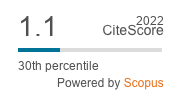Pampa Iluga: Tecnología, trabajo y persistencia de un paisaje agrícola prehispánico en el desierto de Atacama (50 AC-1800 DC)
Keywords:
tecnologías prehispánicas; acondicionamientos agro-hidráulicos; trabajo corporativo; Tarapacá; culturas andinas.Abstract
The direct and absolute relationship that has been established in the Andes between agrohydraulic development, social complexity and centralized power is critically discussed, based on the collection of archaeological and ethnographic data related to the agricultural and hydraulic conditioning that is preserved in Pampa Iluga (Tarapacá, Chile), particularly concerning the archaeological site Iluga Túmulos. The analysis carried out brings to the present a historical memory that challenges the hegemonic vision that has underestimated the role of corporate work and decentralized community organizations, which in this article are promoted as agents of change that led to the construction of a large-scale and long duration agricultural project in the low and hyper-arid lands of Atacama Desert. Likewise, these memories allow to reveal the ontological dimension of indigenous agriculture in Tarapaca, granting agency to other non-human entities with whom humans work in a coordinated and interwoven way in the construction and reproduction of this landscape. The foregoing configures an intricate temporal and socio-natural assemblage, where it is unsuccessful to separate nature from culture.
Downloads
Published
How to Cite
Issue
Section
License
Copyright (c) 2023 Revista de Geografía Norte Grande

This work is licensed under a Creative Commons Attribution 4.0 International License.








